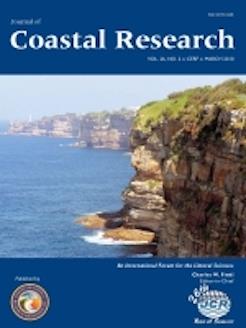As detailed in the paper by Crowell et al., in this issue, the Federal Emergency Management Agency (FEMA) has estimated the U.S. population living in 100 y coastal flood hazard areas. This estimation draws upon flood hazard data that have been accumulated, analyzed, and mapped over the past 40 or more years by FEMA. The purpose of this long-term and evolving flood mapping effort was (and still is) to produce Flood Insurance Studies and Flood Insurance Rate Maps so that FEMA can administer the National Flood Insurance Program.
The flood data, however, are not perfect, and anyone engaging in scientific endeavors related to flooding inevitably finds themselves dealing with uncertainty, and systematic and random error. Indeed nearly every aspect of flood hazard identification and flood loss estimation contains elements of each—from statistical computations of storm surge to measurements of ground elevation and friction coefficients. Given this, there are three main analytical components common to all flood hazard computations and flood risk assessments—each of which contains some error and uncertainty, and each of which may vary with time. These components are discussed accordingly:
Measurement of physical environment: Engineers and scientists measure the shape and size of the river channel or seabed (and associated topography), the hardness or porosity of the soil, and the integrity of structures that impact water flow. These physical measurements contain errors—these errors are sometimes measured in inches or even feet, and they are sometimes hidden in the human estimation of complex coefficients.
Statistical variability in climate: The statistical components of calculations are based largely on observations of historical flood records at tide and river gauges. Rainfall hydrographs are built from years of rainfall data, and our understanding of the statistical nature of waves comes from observations and laboratory tests. All statistical computations contain uncertainty, and in the case of estimating flood hazards, no matter the resources or time available, uncertainties are largely bound by the amount of historical data available. While they can be minimized, they will never be eliminated.
Methods used to make computations: Obviously, the methods and models that are used are not perfect. They are, at best, good mathematical representations of what might happen during a flood if it were to occur in a controlled laboratory setting. As we know, however, floods in nature can be very different than those created in wave tanks or flumes. Floods contain debris that can block openings in bridges, waves can breach dunes at unexpected locations, and absolute certainty in predictions about how flood-control facilities might function (particularly in situations that require human intervention) is not possible. Over the years, as new and better data and information have been produced and compiled, FEMA has used these data to update Flood Insurance Rate Maps. Thus, when new or improved topographic data become available, FEMA incorporates such data into map revisions when appropriate. When statistical observations of climate are expanded or improved upon, FEMA incorporates this information into flood models and reruns the models if appropriate. Further, over time, flood models and methods evolve, and FEMA must evaluate whether these newer models and methods result in cost-beneficial improvements in accuracy and reliability. Indeed, it should be expected that the methods used by FEMA to identify flood hazards will continue to evolve with time as scientists learn more about the threats being faced and become better at determining their magnitude.
It should be noted here that in 2004, FEMA initiated a billion-dollar effort to modernize the flood maps and mapmaking technologies for both coastal and riverine areas. This effort, known as “Map Modernization” (Map Mod) will ultimately result in 92% of the nation's population having flood maps produced in a digital format for their area, while ensuring most of the floodplain boundaries and flood elevations fall within acceptable reliability tolerances. At present, FEMA is embarking on a new initiative where risk assessment and planning strategies are more tightly integrated with floodplain mapping. As such, communities will be able to make more informed risk management decisions and take action to mitigate risk. This new initiative, known as Risk Mapping, Assessment, and Planning (Risk MAP), will enable FEMA to ensure that the data and methods used are not only accurate and reliable, but they are also the best value. With FEMA's coastal flood studies in mind, one of our goals under Risk MAP is to provide updated flood hazard data for 100% of the nation's populated coastal areas.
In summary, scientists and engineers are not able to predict with certainty when, where, or how deep flooding might be in the next year, let alone the next 100 years. This is because all three main components of any flood hazard study—physical environment, climate, and methods—contain some error and uncertainty; compounding this, flood boundaries and flood elevations change with time. Nonetheless, while the ability to estimate the probability side of the risk equation is limited, we (society) are in absolute control of the consequences side. Collectively, we will decide where and how to build (and rebuild) our homes and businesses. We are the ones who will decide where and how to invest in our nation's infrastructure. Future generations will inherit those decisions, as we have inherited the decisions of previous generations. Indeed, the conclusions presented by Crowell et al. (this issue) are an estimate of the cards dealt to us by those who came before. That estimate—while built using the best and most current information available, and derived using valid and replicable methods—contains uncertainty.
We must make our decisions carefully with a full understanding of the risk that we are potentially passing on to future generations. Uncertainty is not license for inaction; rather, it is and will remain something we must live with. To make informed decisions, we must track the probabilities as they change with time, understand the uncertainties and limitations that come with them, look ahead and plan for what is possible, and act in a responsible way.





